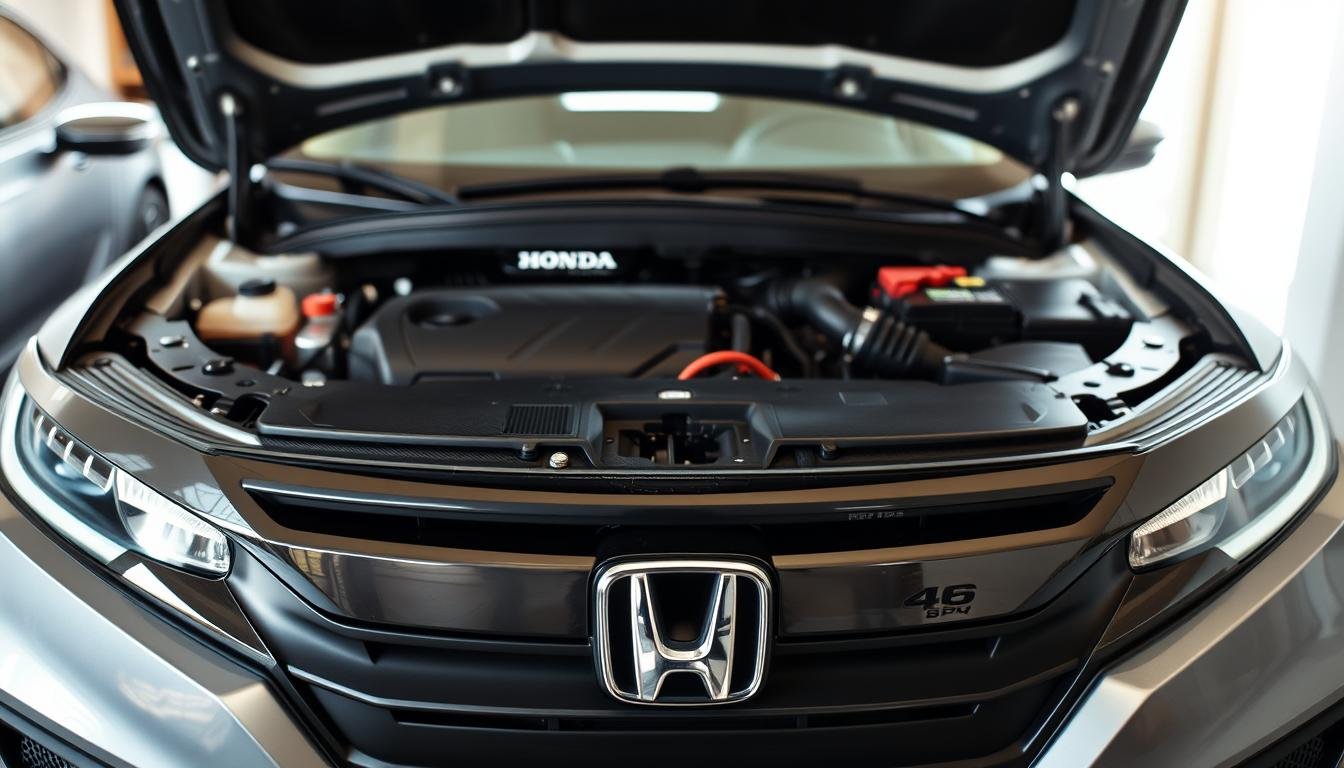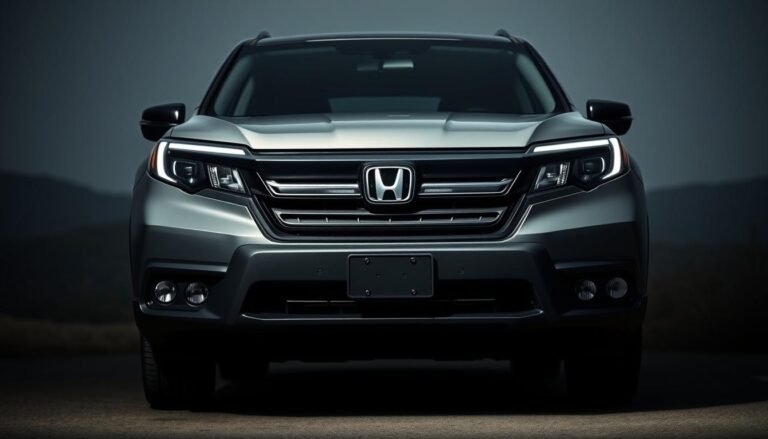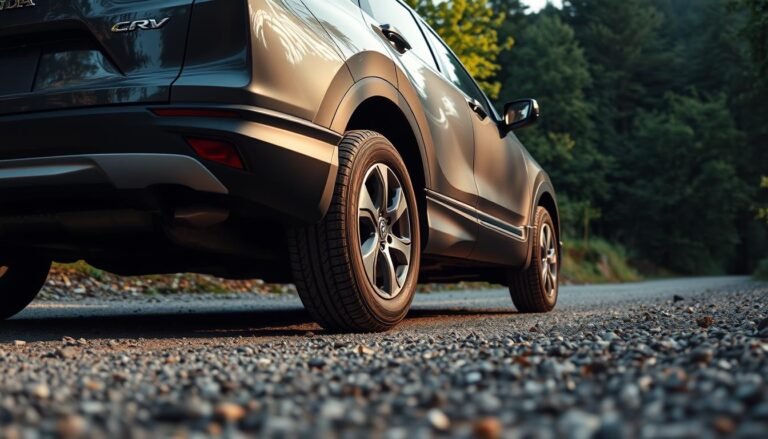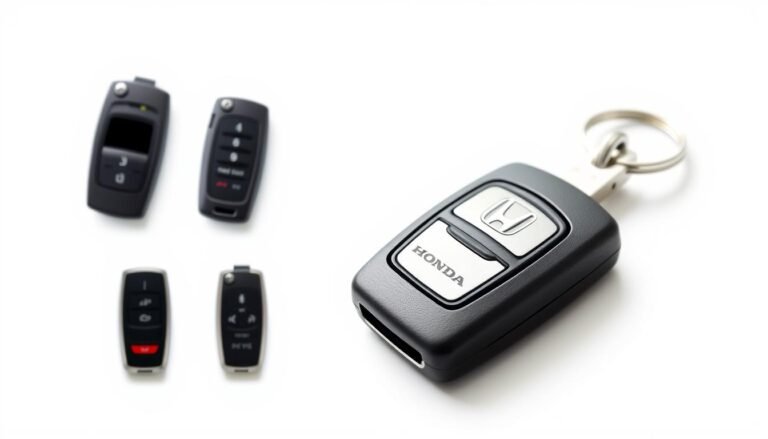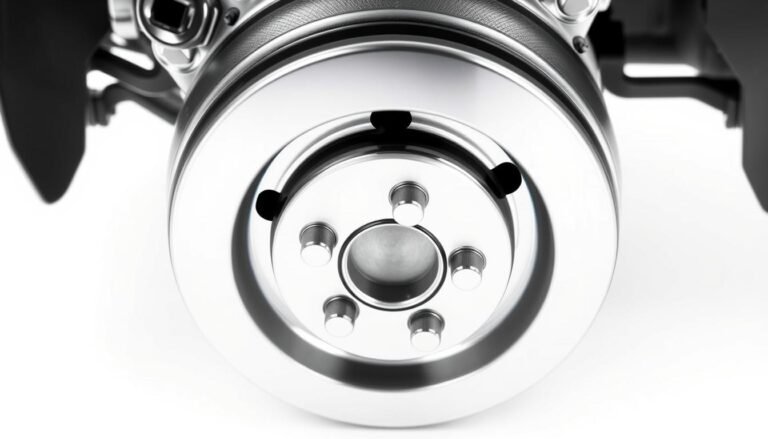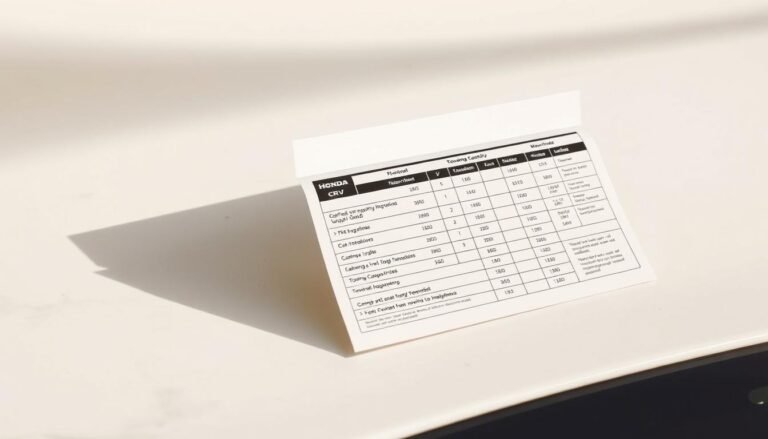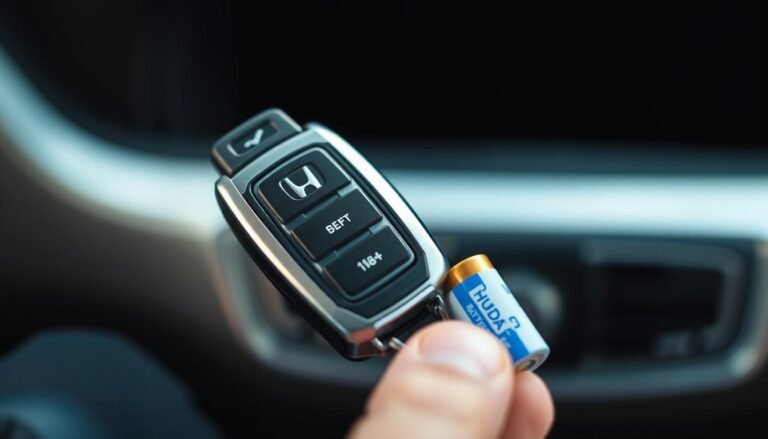Honda Won’t Start But Battery Is Good Troubleshoot Best 7 Tips
If your Honda won’t start but the battery is okay, you’re not alone. This issue is common among Honda owners.
It’s frustrating, especially when you’re in a rush. Luckily, figuring out Honda starting problems is doable with the right knowledge.
First, look for signs that your Honda’s problem isn’t just the battery. Odd noises and malfunctioning lights are key clues.
Always check your dashboard for warning lights and make sure your electronics work right. Then, move on to diagnostic steps to find the actual issue.
This might involve checking the starter motor, looking at the alternator, or checking the fuel system. Each part is important for starting your car.
In this guide, we’ll explore every possible reason your Honda might not start. With these tips, you can solve the problem quickly. Then, you can get your vehicle running again.
What is Starting Issues in Your Honda?
When your Honda won’t start, you might notice some signs. These include clicking noises, dim lights on the dashboard, or no sound at all. Each sign helps figure out why your Honda has trouble starting.
Common Symptoms of Starting Problems
- Clicking sound when attempting to start
- Dim or flickering dashboard lights
- Silent response upon turning the ignition key
- Potential sputtering noises from the engine
- Difficulty turning the key in the ignition
How Ignition Systems Work
The ignition system is key to start your Honda. It includes the ignition coil, spark plugs, and starter solenoid.
If any part fails, your Honda might not start. Knowing how it all works is crucial for troubleshooting.
Signs That Indicate Your Honda Battery Is Fine
Knowing the signs of a good battery in your Honda is key when it won’t start. Many times, the focus is only on the battery.
But knowing the signs of a healthy battery can save you from unnecessary replacements.
Dashboard Lights and Electronics Functioning
If your dashboard lights are on and all electronics work, your battery is likely fine. No need to dig into honda starting problems troubleshooting guide, as a good battery supports basic systems.
Weak batteries cause lights to dim or flicker, indicating power issues.
What is Battery Voltage Readings?
Check your battery voltage to be sure it’s good. A healthy battery shows 12.4 to 12.7 volts when off. When the engine runs, it should be up to 14.7 volts.
These readings mean your battery is likely okay. If your dashboard lights work and the readings are good, the battery isn’t the issue.
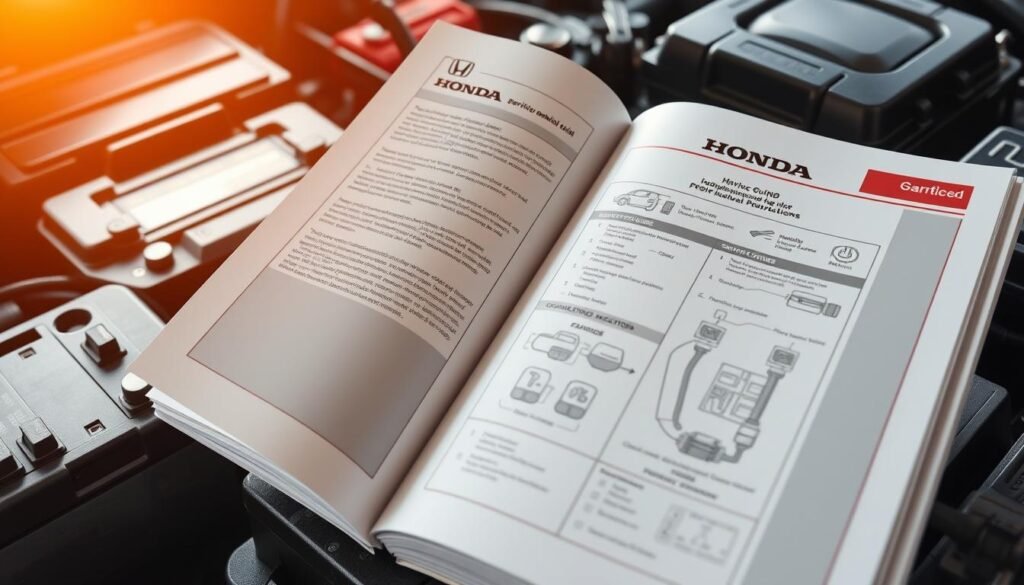
Honda Won’t Start But Battery Is Good
If your Honda won’t start, it might not be the battery’s fault. Other parts could be the problem.
Looking at the starter motor, alternator, and fuel system is key. A step-by-step method can help find the real issue.
Possible Culprits Beyond The Battery
Remember, many things can cause starting issues. Some common problems include:
- Starter Motor Issues: A bad starter motor may not work, stopping the engine from starting.
- Fuel System Failures: Not enough fuel or blocked fuel filters can stop the fuel from getting through.
- Electrical System Failures: Broken wires or bad relays can mess up the signals needed to start the engine.
- Ignition System Malfunctions: Issues with spark plugs, ignition coils, or switches can prevent the car from starting.
Diagnostic Steps To Follow
To figure out why your Honda won’t start, try these steps:
- Listen for odd sounds: Clicking might mean starter problems. No noise could point to electrical issues.
- Check fuses: A blown fuse can stop the car from starting. Replace any bad fuses.
- Assess fluid levels: Make sure there’s enough fuel in the tank to avoid fuel delivery problems.
- Inspect connections: Check if battery terminals or starter motor connections are loose or corroded.
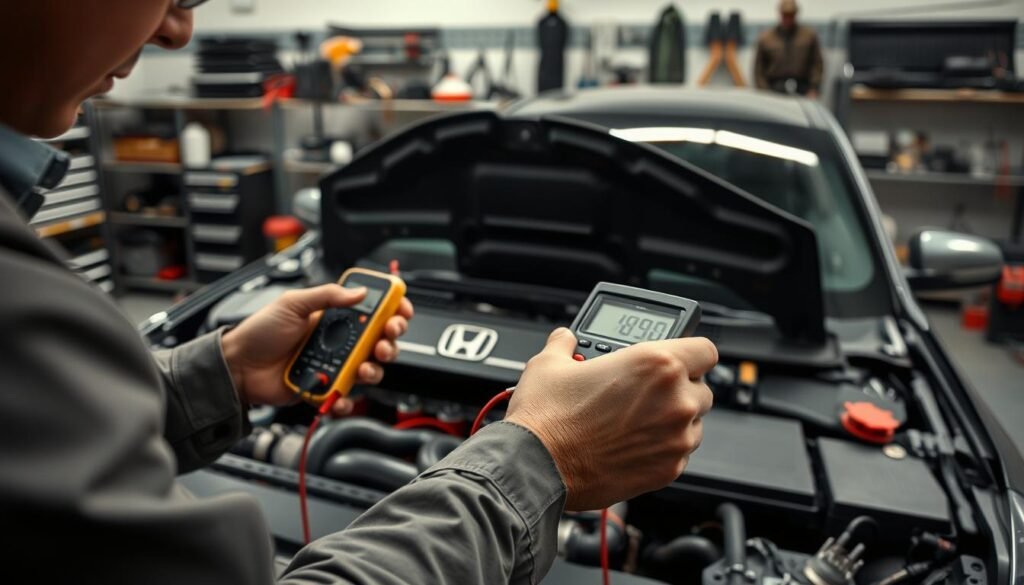
Troubleshooting The Starter Motor
The starter motor is vital for getting your Honda running. If starting your car becomes hard, it might be the starter motor’s fault. A tell-tale sign of a problem is a clicking sound when trying to start the car.
his guide will help you find out why your Honda makes that sound. It will also show you how to check the starter’s connections.
Identifying Clicking Sounds
Hearing a clicking noise can mean trouble with the starter motor. This sound often means the starter gear isn’t moving as it should.
Try starting the car and listen for the noise. If it keeps happening, the issue could be a weak battery or a damaged starter motor.
Testing Starter Connections
First, make sure the starter’s connections are tight and not rusty. Looking closely at them is a good first step.
Here’s what to do:
- Turn off the vehicle and disconnect the battery.
- Locate the starter motor, usually found near the engine’s flywheel.
- Inspect the wiring connections for any signs of wear or damage.
- Check for corrosion on terminals and clean as necessary.
- Reconnect the battery once inspections are complete.
Checking the starter connections well can show if the starter motor is bad. Or if the problem lies elsewhere. Making sure these connections work right is key to a smooth start.
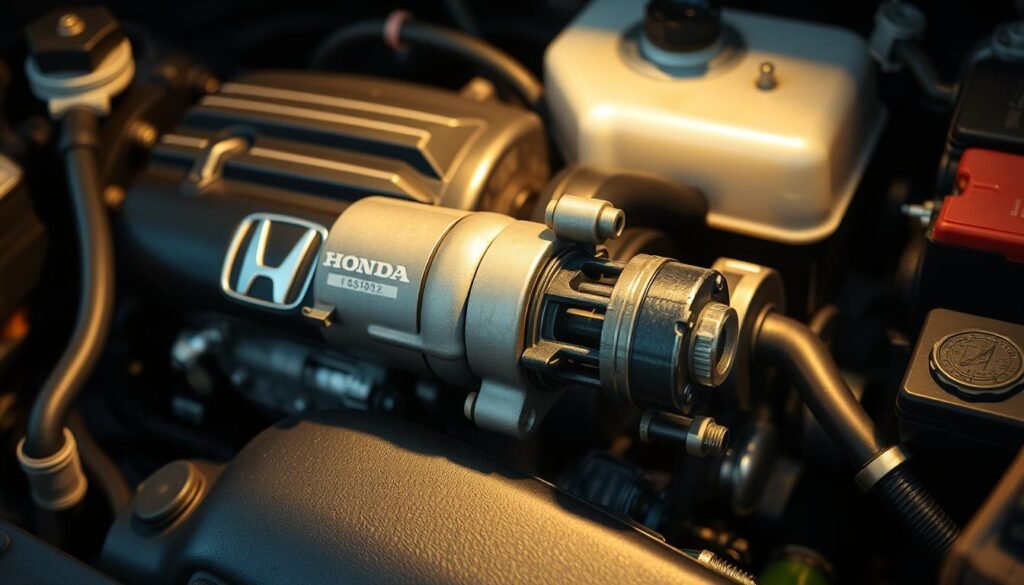
| Symptom | Possible Cause | Next Step |
|---|---|---|
| Clicking sound when starting | Weak battery or faulty starter motor | Test battery voltage, check starter motor integrity |
| No sound when turning key | Faulty ignition switch or starter connections | Inspect ignition switch, check connections for security |
| Intermittent clicking sound | Loose or corroded starter connections | Perform visual inspection and clean or tighten connections |
Assessing The Alternator Performance
The alternator is key to keeping your car’s electrical system running. It charges the battery while the engine works.
If your Honda won’t start but the battery seems fine, the alternator might be the problem.
This guide will show you how to check if your alternator is working right or if it’s starting to fail.
How To Check The Alternator Function?
To check your alternator, start with a simple test while the car is running. Here’s what to do:
- Start your car and let it idle.
- Check the battery voltage with a multimeter. It should be between 12.6 to 12.8 volts if the battery is healthy.
- Rev the engine to about 2,000 RPM and check the voltage again. It should increase to between 13.7 to 14.7 volts.
- If there’s no change or if the voltage drops, your alternator might not be working right.
Signs of A Failing Alternator
Keep an eye out for signs that your alternator is on its last legs:
- Dashboard lights that dim or flicker.
- Strange noises like grinding or whining from the alternator area.
- A warning light shaped like a battery on your dashboard.
- The battery seems OK, but the car is hard to start.
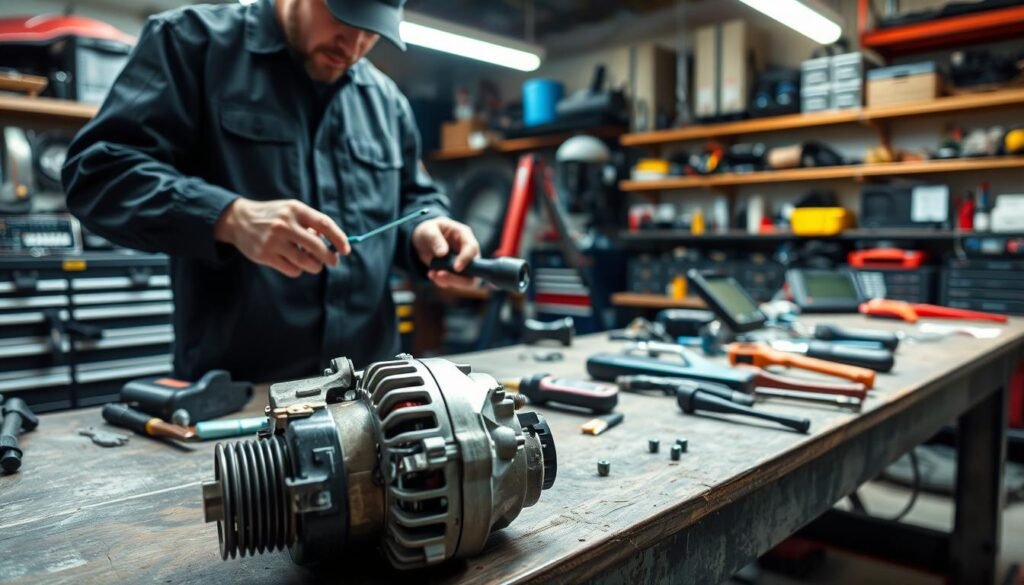
Spotting these signs early can make a big difference. Addressing alternator problems quickly can prevent bigger issues.
This is crucial for avoiding situations where your Honda won’t start, even though the battery is charged.
Examining The Fuel System
Your Honda’s fuel system is key for a smooth start and run. If your car won’t start, check the fuel system first.
Look at fuel levels and watch for any problems with fuel getting to the engine. A good battery doesn’t mean the fuel supply is fine.
Checking Fuel Levels
One easy troubleshooting step is to look at the fuel levels. First, check the fuel gauge to make sure you have enough gas. The gauge might be wrong sometimes.
So, to be sure about the gas level:
- Open the fuel cap and look at the fuel level if you can.
- Use a dipstick to measure the fuel level directly if it’s convenient.
- Make sure the fuel gauge is connected right and works well.
Signs of Fuel Delivery Issues
If checking the fuel level doesn’t fix the issue, you might see signs of fuel delivery problems. These signs help figure out if the fuel system is the issue. Look for:
- Engine sputtering or rough idling could mean not enough fuel is coming through.
- If the car lacks power when speeding up, it might not get enough fuel.
- No noise from the fuel pump when starting the car shows it might be broken.
- Hard starting or long starting times suggest there could be a fuel issue.
Be quick to respond to these signs to keep your Honda in top shape. Knowing how to check fuel levels and recognize fuel issues can prevent problems later on.
Inspecting The Ignition System Components
The ignition system kick-starts your Honda. It creates the spark that sets off the fuel and air mix in your engine.
When your car won’t start, look at the ignition system, especially the spark plugs and coils.
Keeping these parts in good shape helps avoid issues that could stop your car from running.
Testing Spark Plugs and Coils
Start with checking the spark plugs and coils if you have ignition troubles. These parts are key for your engine’s start and smooth running.
Here’s the right way to test them:
- Inspect the Spark Plugs: Take out each spark plug and look for signs of wear or buildup. A good spark plug looks clean.
- Check Resistance on Coils: Use a multimeter to measure the ignition coils’ resistance. It tells you if they’re working right.
- Conduct a Spark Test: Plug the wires back in and turn the engine over. Watch for a sharp blue spark, which means your ignition system is healthy.
The Role of The Ignition Switch
The ignition switch is crucial for getting power from the battery to the ignition system. A broken switch can stop your car from starting, even if everything else works.
To test it, follow these steps:
- Turn the Key: You should hear a click. If you hear it but the car won’t start, the switch might be broken.
- Check for Power: Use a multimeter to see if the ignition switch gets power when you turn the key to ‘On’.
- Inspect Connections: Make sure the switch’s wiring and connections are tight and not corroded.
Looking into Timing Belt and Engine Issues
The timing belt is crucial in your Honda’s engine. It makes sure the engine’s parts move together well.
By keeping the crankshaft and camshaft in sync, your car runs smoothly. A good timing belt means a smooth-running engine, but a bad one can cause big problems.
Learning Timing Belt Functions
This belt links the camshaft and crankshaft, helping the engine work right. When the belt wears out or breaks, your car might not run correctly.
Keeping the timing belt in good shape helps avoid these issues.
Signs of Timing Belt Failure
Knowing when the timing belt is failing can save you a lot of money. Look out for these signs:
- Strange noises, like grinding or ticking, from the engine.
- Problems starting the engine or it won’t start at all.
- Wear on the belt, such as cracks or frays.
- The engine misfires or isn’t running as well as it should.
If you see any of these problems, get it checked right away. Not fixing it can lead to bigger, more expensive issues.
Conclusion
Fixing Honda start problems can be easy if you follow the steps one by one. Knowing how the start system works is key.
This includes the starter motor, alternator, fuel system, and ignition parts. With this guide, you’ll understand what to check and how to do it right.
Keeping your Honda in top shape is crucial. Make a plan to check its important parts regularly. Know when it’s time to call in a pro.
If your checks don’t fix the issue, a certified mechanic can do deeper checks to help. Being ahead of problems and regular care can save you both time and money.
It also makes you more confident in handling your Honda’s needs. Take charge of how your car runs. This way, you’ll keep it running smoothly for many years.
FAQs
Q: Why won’t my Honda start even though the battery is good?
A: Your Honda might not start for a few reasons even with a charged battery. Issues can be with the starter, alternator, ignition, or fuel system. Finding the exact problem requires some troubleshooting.
Q: What are the signs of starting problems in my Honda?
A: Starting trouble signs include clicking noises, dim lights on the dashboard, silence when you turn the key, or the engine trying but failing to start. These signs help pinpoint the problem.
Q: How can I check if my Honda’s battery is functioning properly?
A: Check your dashboard lights and other electronics work well, which means the battery voltage is okay. A strong battery shows 12.4 to 12.7 volts.
Q: What should I do if I hear clicking when trying to start my Honda?
A: Clicking often means a bad starter motor or loose connections. Check the starter’s connections for rust and make sure they’re tight. You might need more tests if the problem stays.
Q: How do I test my Honda’s alternator?
A: Start your car to test the alternator and watch the battery’s behavior. Dimming dash lights or weird sounds could mean a bad alternator that needs fixing.
Q: What fuel system issues could prevent my Honda from starting?
A: Not enough fuel, a broken fuel pump, or a blocked fuel filter can stop fuel from getting to the engine. Watch the fuel gauge and listen for fuel movement issues.
Q: How can I inspect the ignition components in my Honda?
A: Look at the spark plugs and ignition coils’ condition, and check if the ignition switch properly links the battery to the ignition system. This helps identify ignition problems.
Q: What role does the timing belt play in starting my Honda?
A: The timing belt keeps engine parts in sync for the starting process. Signs like strange sounds or the engine not reacting point to timing belt issues. Catching these early can prevent major engine trouble.

